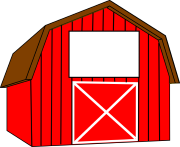 |
One of the great things about writing a blog is the occasional interesting email I receive from some of my readers.Recently I was contact by Trung ‘Average’ Phan, a very talented member of Princeton’s Physics department who pointed out a couple of updates/corrections in previous articles I’d written. In the article Grazing and Calculus, which is about how to make the largest possible rectilinear grazing area for a goat using just straight sections of fence, I was comparing the possible field sizes that could be obtained by using the straight sides of a square barn as part of the perimeter of the field. |
Recently I was contact by Trung ‘Average’ Phan, a very talented member of Princeton’s Physics department who pointed out a couple of updates/corrections in previous articles I’d written.
|I compared the possible areas based on if the barn was used parallel to the field, or if it was used on a bias. I concluded that, if the ratio of the side of the field to the barn was greater than 7(√2+1)/2, then it was optimal for the paddock to be constructed with the barn bias to the edge, and if less, then parallel.I totally missed the possibility of the case when the barn is in the corner! Doh! Let’s address this omission …| |
|
I totally missed the possibility of the case when the barn is in the corner! Doh! Let’s address this omission …
Three little barns
| |As before, we’re going to assume the length of the side of the barn is less than the length of the side of a paddock, and that the barn is square. To simplify the math, we’ll normalize the side of the barn to be one unit.We’ll define the total length of the fence sections used to L units.From the previous article, we already proved the that optimal shape of the rectilinear field is square, so let’s look at the three cases for these square fields.|
|As before, we’re going to assume the length of the side of the barn is less than the length of the side of a paddock, and that the barn is square. To simplify the math, we’ll normalize the side of the barn to be one unit.We’ll define the total length of the fence sections used to L units.From the previous article, we already proved the that optimal shape of the rectilinear field is square, so let’s look at the three cases for these square fields.|
We’ll define the total length of the fence sections used to L units.
| |We now have three formulae for the area based upon the length of fence used.|
|We now have three formulae for the area based upon the length of fence used.|
Graphing
Here are the three areas plotted on a graph. As you can see, as the ratio of the Length of the fence to the barn becomes larger, the configuration with the barn in the corner becomes optimal.

A little substitution shows that when L>6½ then the corner solution is optimal.
(At smaller ratios, the parallel solution is more efficient, and even though the bias version overtakes it at 7(√2+1)/2, as this is approx 8.4497 this is after the corner case has taken over).
Stop the press!
Not content with correcting my omission from before, I published this update with the error of missing off another case (thanks Frederik, for pointing this out).
|There is also the case of using the barn at an angle in the corner. This also adds √2 to the length of the fence, but only at the expense of a quarter of a unit squared being removed: |
| |
|
As you can see, when the ratio is high, the full corner is still the most efficient, but it changes things a little earlier on:

If L ≤ (3/2)+(3/√2) then parallel is the optimal.
If L > (3/2)+(3/√2), and ≤ 5(1+1/√2) then Quarter Corner is the optimal.
If L > 5(1+1/√2) then Full Corner is the optimal.
You can find a complete list of all the articles here. Click here to receive email alerts on new articles.
Click here to receive email alerts on new articles.